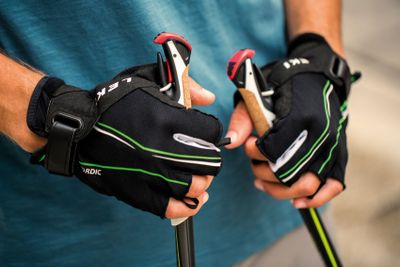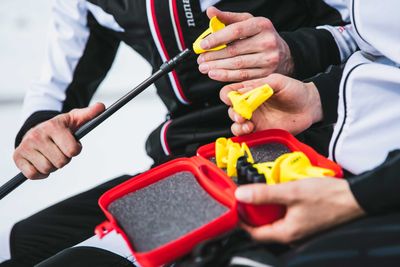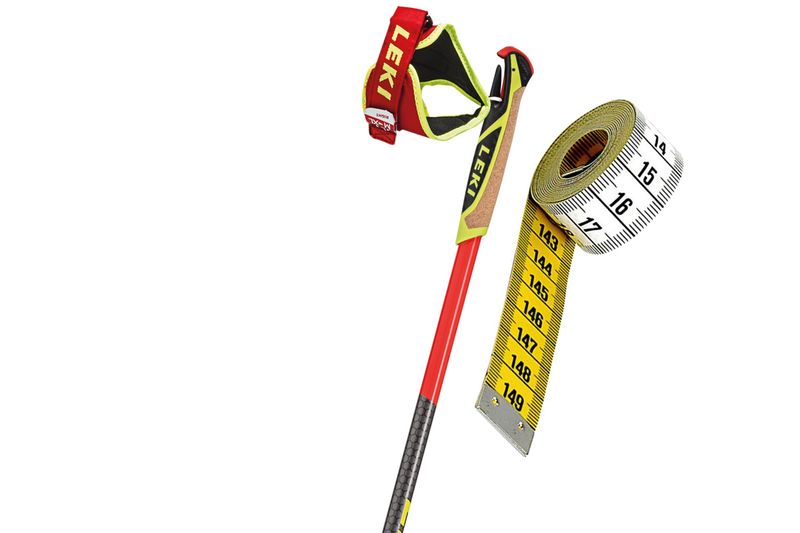Contents
Calculating the right length for cross-country ski poles
Next to the skis, the pole is the most important equipment for cross-country skiing. With the wrong pole length, you can't improve your technique and, in the worst case, damage your posture. Fortunately, choosing the right cross-country ski pole is not particularly difficult.
Pole length configurator
Two clicks and you're done!! Simply indicate how you rate your ability on cross-country skis and choose your body height. Our cross-country pole length configurator will tell you the optimal pole length for you. Since the poles are often only available in 5cm increments, you then only have to round up or down to determine the correct pole length.
How do I know if the length of the poles is right for me?
When you are on skis, you can easily check if your poles are suitable for you. For classic cross-country skiing, the poles should reach approximately up to your shoulder. Especially for beginners, the pole should never be longer. Athletic skiers and racers often take about 2-4cm longer poles to be able to push off even more powerfully. Skating poles are on average 10cm longer and may reach the skier's chin. Here, too, the recommendation is that beginners should tend to round off and athletic skiers can also choose 2-4cm longer. The following formulas provide a good guide for calculating pole length:
- Height (in cm) x 0.85 = Classic pole length
- Height (in cm) x 0.90 = Skating pole length
The right pole length for children
Because of slightly different body proportions, the rules of thumb are slightly different for children. For the classic style, poles should reach to the armpit (and not to the top of the shoulder as for adults). Skating poles should reach at least to the chin and no more than the nose. Again, poles tend to be a little longer for good skaters and a little shorter for beginners.
Why is the right pole length so important?
When cross-country skiing, the right pole length is absolutely essential. If the poles are too long or too short, not only will the skier develop poor technique, but it can also lead to body malpositions, often accompanied by back pain. If the pole is too short, the cross-country skier bends too far forward, especially in the skating style, and does not have optimal power transmission for maximum propulsion. Poles that are too long often result in the wrist being subjected to too much strain.
What else is there to consider when choosing poles?
The right shaft
The pole shaft refers to the actual pole, i.e. the tube of the pole. Under no circumstances should you rely on poles that are adjustable in length when cross-country skiing. They simply lack the stiffness for optimal power transmission and often adjust themselves unintentionally in length while running. It is therefore necessary to calculate the optimal length and then rely on the right fixed-length model.
When it comes to the material, you basically have the choice between aluminum and carbon. Basically, carbon poles are usually somewhat lighter, but also significantly more expensive. In addition, aluminum poles have the advantage of being a bit more robust. Especially for beginners we recommend to use aluminum. Racers and very athletic runners rely on carbon poles because of the weight advantage.
Grip and strap

For the grip, you often have the choice between cork and plastic, although neither material offers decisive advantages. Cork is often a little less sensitive to cold, but can wear out a little faster. Ultimately, however, this decision is up to personal taste.
Baskets


